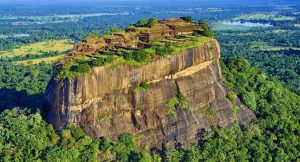Last Updated: December 12, 2019 Nidhi Singh
Uttarakhand has been a favourite haunt for many nature-driven souls across the country. Its remote and lesser known locations often intrigue the adventure junkies to head out and create history of their own. Also known as the Land of Gods, Uttarakhand takes great pride in housing several eminent Hindu and Sikh shrines in India. However, it has been noticed very less have spoken about the state’s history, although Uttarakhand possesses several historical sites. Despite travelling to Uttarakhand many times, most of us are unaware that Uttarakhand has been the refuge for Kols in 2nd century BC; great Sages practiced meditation to attain enlightenment and to many trade merchants trading salt with Tibet. And only a few of us know that Chand and Katyuri were two major dynasties in the state that contributed immensely to the history of Uttarakhand. Also, many are aloof with the facts like there are places in Uttarakhand where Kauravas are worshipped and polyandry is practiced. That is why this time we came up with a blog that will enlist such places in Uttarakhand that reflects the rich history of this state. We hope that you would like our attempt.
Narendra Nagar, Tehri Garhwal District

Photo Courtesy: bit.ly/1Oym7VF
Once, the part of Tehri Riyasat, Narendra Nagar is a historical town of Garhwal region. Ruled for a very long time by Shah Rulers, Narendra Nagar has many evidences to prove the majesty of the Garhwal Kingdom. Maharaja Narendra Shah shifted his capital to this beautiful town in 1919 and constructed several buildings that are still in use as hospital and secretariat. The royal palace of Narendra Shah, which also the home to an incredible spa destination: Ananda- Inn the Himalayas is the highlight of this town. The palace still has original relief work on its walls and the gateway is adorned with two cannons dating back to World War I. According to the tourists who have already been here; the sunset view from the palace is surely a thing not to miss.
Why you should be here: Ancient Buildings, Proximity to Rishikesh, Panoramic View of Doon Valley.
How to reach: Narendra Nagar is only at a distance of 16kms from Rishikesh and is well-connected by road with buses and cabs. Direct buses to Narendra Nagar are available from Delhi, Rishikesh and Tehri.
Dwarahat, Almora District

Mritunjaya Group of Temples – Dwarahat, Photo Courtesy: Flickr
Situated about 34kms from Ranikhet, Dwarahat is a small town that was once the seat of Katyuri Kingdom. Dwarahat, which literally means- “Way to Heaven”, is popular for its ancient temples. The temples have the influence of Gurjari School of Art and is certainly a must visit in Uttarakhand. A small place, Dwarahat can be covered in a day although there are 55 temples to witness. Katyuri dynasty, which is responsible for the construction of temples in Dwarahat, is believed to be the most prominent rulers of the Kumaon region of Uttarakhand. Prior to the defeat at the hands of Chand rulers, Katyuris made an important contribution to the architectural grandeurs of the Garhwal region as well.
Why you should be here: For Ancient Temples, Spectacular Scenery, Respite from Summer Heat.
How to reach: The best way to reach Dwarahat would be to board a train till Kathgodam (88kms from Dwarahat) and then take a cab or bus for the destination.
Chaukhutia, Almora District

Famous as Rangilo Gewar, Chaukhutia is a sleepy town in Kumaon region. Rising to fame during the Katyuri rule, Chaukhutia is an appreciable place to witness the rich history of Uttarakhand. The town preserves the remnants of the Katyuri dynasty in the form of fort and temples. The legend has it that Pandavas from the epic Mahabharata also stopped here for a short period while they were in exile. It is believed that Pandukholi caves found in Chaukhutia have been built and adorned by Pandavas and are truly a site to visit.
Why you should be here: Fort, Caves, Nature’s Beauty, Salubrious Climate.
How to reach: The best way to reach Chaukhutia would be to board to Kathgodam and then hire a cab to reach the destination.
Lohaghat, Champawat District

Jhuma Devi Temple- Lohaghat, Photo Courtesy: Flickr
Situated on the bank of Lohawati River in Champawat district of Uttarakhand, Lohaghat is reckoned to be important destination in the state. An ancient town, Lohaghat is known for its temples that are more than a century old. This historic city is a witness to several historical events in the bygone era and each event is believed to have been marked by the construction of one temple each time. Places like Abbot Mount, Mayawati Ashram, Jhuma Devi and Advaita Ashram are major attractions here. Lohaghat is indescribable when it comes to nature’s beauty. Usually adorned with Rhododendrons in the summer, this beautiful hill station becomes an ideal place to holiday in Uttarakhand.
Why you should be here: Ancient Temples, Breathtaking Landscape.
How to reach: The best way to reach Lohaghat would be to take a bus to Tanakpur and then opt either for a cab or bus from there to Lohaghat. Cab can also be hired for direct journey to Lohaghat.
Ghuddauda, Almora District
Unlike other historical destinations in Uttarakhand, Ghuddauda in Almora district has no specific monument to boast of. It is believed that the town is named so because of the horse race that used to take place in during the British Raj. According to the locals, the race used to be held in a huge field with great pomp and show. It is also said that the race was unique in its own way as whoever won the race had the choice to select the prize of his wish. This small town in the district of Almora stands as an example of the interest of people in adventure and sports. A beautiful sleepy town now, today’s Ghuddauda can be an excellent offbeat destination in Uttarakhand.
Why you should be here: Quietness, Offbeat Destination, Folklores.
How to reach: Ghuddauda is in Almora district, the best would be to reach is first arrive at Almora by a bus. There are direct buses to Almora from Delhi. From Almora, one can take a jeep or a cab to Ghuddauda.
Kalsi, Dehradun District

Ashoka Rock Edict Kalsi, Photo Courtesy: Flickr
About 5km from Dakpathar in Dehradun district, Kalsi is a small town that is famed for its Ashoka Pillar Rock Edicts. It is believed that the Rock Pillar erected here dates back to 450 BC. The pillar is reckoned as a symbol of a prosperous era during the Ashokan rule. This rock pillar in Kalsi is 10ft high and 8ft wide and has a figure of an elephant that is inscribed in Brahmi script on the right side of the rock. Kalsi is situated on the bank of River Yamuna and has attractions like Asaan Barrage, Sahastra Dhara and Paonta Sahib.
Why you should be here: Ashoka Rock Pillar Edicts, Paonta Sahib, Sahastra Dhara, Asaan Barrage, Beautiful Landscape, Tranquility and Offbeat.
How to reach: Kalsi is only 43kms from Dehradun and there are number of state run buses and private buses/cabs for Kalsi from Dehradun. So, ideal way to reach Kalsi would be to take a train/bus to Dehradun and then hire a cab or take a bus to Kalsi.
Tons Valley, Jaunsar Bawar Region
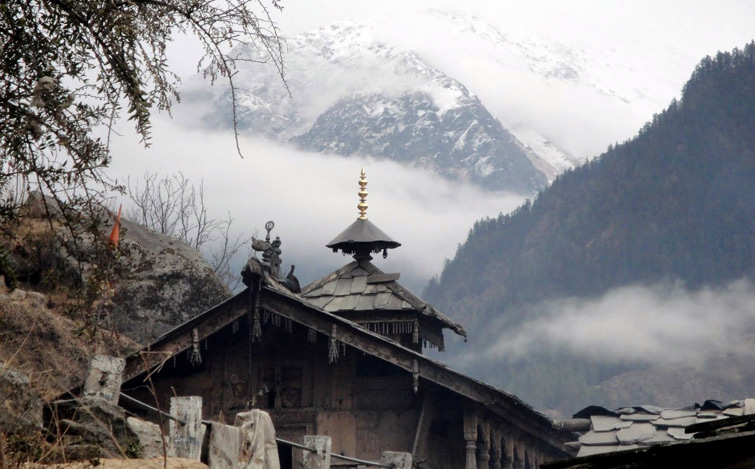
Duryodhan Temple, Tons Valley, Photo Courtesy: bit.ly/1Oyn4ND
Tons valley is famed for its distinct culture and traditions and the most specific being polyandry and to some extent, polygamy as well. The people of Tons consider themselves the descendants of Pandavas and Kauravas and worship Kauravas as gods, there is also a temple that is dedicated to Duryodhan. What make this region special are its ancient temples and their Festival of Balls held every January. Most of the ancient temples here can be seen made of wood with pent roofs lined with slates. Duryodhan Temple is the most historic temple of this region.
Why you should be here: Ancient Temples, Temples of Kauravas, Nature’s Beauty, Rafting, Trekking and Camping.
How to reach: Tons Valley can be accessed through Dehradun. One can easily book cabs/taxis from Dehradun.
Mussoorie, Dehradun District
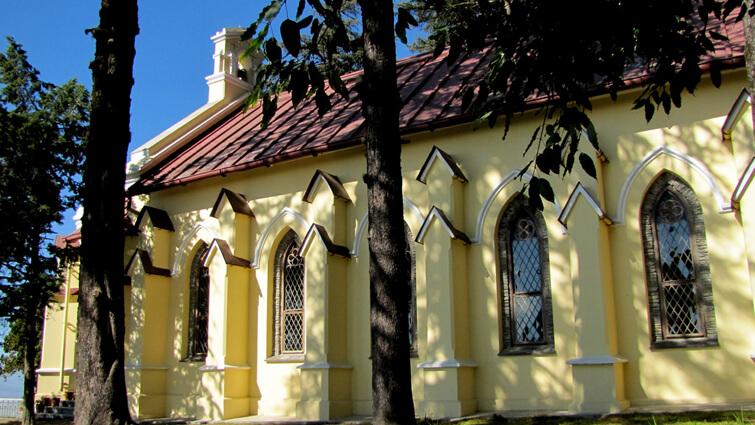
Mussoorie takes us back in the time of British rule. Developed as a shooting lodge after being found by Captain Young and Mr. Shore, Superintendent of Revenues, Mussoorie gained popularity in no time at all. Since it became a favourite of many British Personnel, many building including resorts and holiday homes were constructed here for the comfort. Mussoorie attracts tourists with those same colonial period buildings till now. Undoubtedly, the city has earned its fame by being naturally beautiful but these colonial style buildings contribute to its charm.
Why you should be here: British Architecture (Sir George Everest House, Christ Church, Union Church and British style made houses), Nature’s Beauty (Waterfall, Green Rolling Mountains, Salubrious Climate).
How to Reach: There are direct buses to Mussoorie from Delhi and many major cities of North India. Apart from this Dehradun is the nearest railhead, situated at a distance of 33kms from Mussoorie. So, one can also reach by taking a train till Dehradun and then a bus/cab/sharing cab to Mussoorie.
Nainital

Governer House Nainital, Photo Courtesy: Panoramio.com
The beautiful Lake City, Nainital is a perfect example of British architecture influence in Uttarakhand. From having the colonial style houses to buildings that are now mostly converted into government offices, there remains history in each part of this city. The city boasts of famed Jim Corbett’s residence; Governor’s House that’s almost looks like Buckingham Palace (England); India’s first Methodist Church and several other small and big colonial structures.
Why you should be here: Colonial Era Structures, Sparkling Lake, Respite from Summer Heat, Beautiful Landscape.
How to reach: Nainital can be reached directly by bus from Delhi. One can also board a train till Kathgodam and then from there hire a cab or take a bus.
Dehradun

Clock Tower Dehradun, Photo Courtesy: bit.ly/1IoHjZq
Dehradun is perhaps known best for its institutes that British left behind. This capital of Uttarakhand happens to actually offer glimpse of different periods and their influence over the modern day city. Dehradun is said to be have founded by Guru Ram Rai in the 18th century. Guru Ram Rai Darbar, which is a Gurudwara built in 1699 by Raja Fateh Shah is an important building that marks the history of Dehradun. The famed Clock Tower and Forest Research Institute set up during the British Raj can rightly be called the historical landmarks of Dehradun.
Why you should be here: Historical Sightings, Proximity to Mussoorie, Dakpatthar, Chakrata and Ashoka Rock Edicts in Kalsi.
How to reach: Dehradun is well connected with rail, road and air to major cities in India and thus can be accessed with eased.
Kausani, Bageshwar District
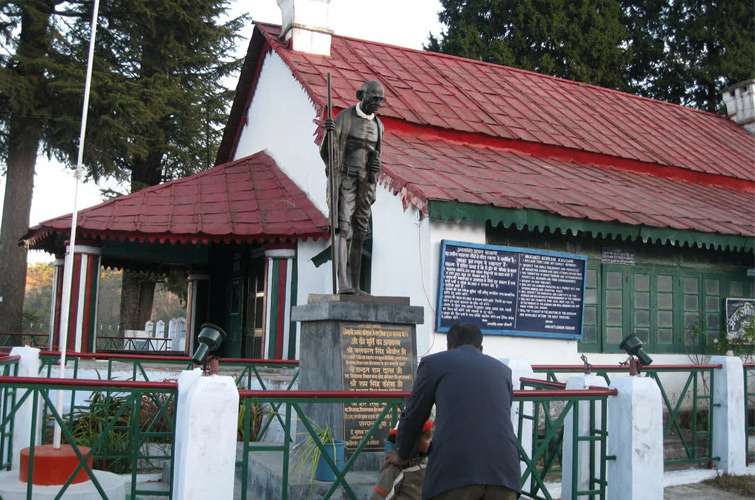
Anashakti Ashram, Kausani, Photo Courtesy: Panoramio.com
Situated in the Bageshwar district of Uttarakhand, Kausani is a peaceful hill station. Known best for nature’s beauty this place also has historical significance. It is recorded that Mahatma Gandhi stayed in Kausani in 1929. It is said that during his stay in Kausani, Mahatama Gandhi penned Gita-Anashakti Yoga by being inspired by the beauty of this town. Gandhiji was so impressed by the place that he even started called Kausani- the Switzerland of India. The place where he stayed is called Anashakti Ashram and it still accommodates visitors.
Why you should be here: To see Anashakti Asharam and to witness mesmeric views of Himalayas.
How to reach: Kausani can easily be reached by taking a bus as there are direct buses to Kausani from Delhi. Train can be boarded till Kathgodam and then cab/bus can be taken upto Kausani.
Bageshwar

Bageshwar Temple, Photo Courtesy: bit.ly/1I6IzBs
Bageshwar in Kumaon region of Uttarakhand has rich religious history. In Skanda Puran, an ancient religious text, Bageshwar is reckoned to be a place where sages came to meditate and worship Lord Shiva. Bageshwar is a town of temples and the most important one is Bagnath Temple, which is believed to have located at a place where famed Sage Markandey greeted Lord Shiva in the form of a lion. There are several temples like Ram Ghat temple, Agnikund temple, Nileshwar temple, Kukuda Mai temple, Shitla Devi temple, Trijugi Narayan temple, Hanuman temple, Nileshwar Dham, Swarg Ashram, Ramji temple, Loknath Ashram, Ashram of Amitji, Jwala Devi temple, Veni Mahadev temple, Radha Krishna temple, Bhileshwar Dham, Suraj Kund, Siddartha Dham, Gopeshwar Dham, Golu temple, Praktishwar Mahadev, Baijnath, Shri Haru Temple and Gauri Udiyar that boast a great deal about the religious history of this sacred place in Uttarakhand.
Why you should be here: To visit various temples, Bageshwar is the base for several treks like Sunderdhunga, Kafni and Pindari Glacier, Serenity and Mountain View.
How to reach: There are direct buses for Bageshwar from Delhi as well as many cities of Uttarakhand. Another way to reach Bageshwar would be reach to board a train till Kathgodam and then take a bus/cab.
Srinagar, Pauri Garhwal District

City View of Srinagar Garhwal, Photo Courtesy: bit.ly/1IqiEbu
Once, the capital of Panwar Dynasty, Srinagar is an important milestone in the historic journey of Uttarakhand. Thus, one has good chance to learn about the rich history of the state by visiting this now busy hub in Garhwal Himalayas. Raja Ajaypal was the one to shift his capital to Srinagar, which persisted till 1803 AD. There are several ancient temples like Kamleshwar Temple, Keshorai Math, Vishnu Mohini Temple and Kilkileshwar Temple that takes one back in time of utmost spirituality in this region. It is also believed that Srinagar played an important role in developing the culture and tradition of Garhwal during the period of evolution.
Why you should be here: Rich History, Base to Chopta and several other treks in Garhwal, Ancient Temples.
How to reach: The best way to reach Srinagar would be to take a bus directly from Delhi that passes through Haridwar and Rishikesh. Buses are also available from Haridwar for Srinagar, which is at a distance of approx 100kms.
Binsar, Almora District

Binsar Temple, Photo Courtesy: bit.ly/1MsREtC
Often dubbed as the nature lovers’ paradise, Binsar is a surreal town in Uttarakhand. Once, under the Chand Rulers (6th and 7th century), Binsar has been the favourite holiday spot for British during the colonial rule thus one can find several imperial estates like Mary Budden and Grand Oak that have now converted in to resorts here. A dreamy place, Binsar is still a preferred place for those seeking an escape from the hustle and bustle of city life. The settlements in Binsar can also remind one of a peaceful existence of British in this region.
Why you should be here: Well-maintained British estates and houses, Outstanding landscape, Binsar Wildlife Sanctuary, Temples.
How to reach: Binsar can be reach easily as there are several buses available from Delhi and many cities of Uttarakhand. One can also hire cab after getting down at Kathgodam Railway Station if happen to travel by a train.
Badharangadi, Chamoli District
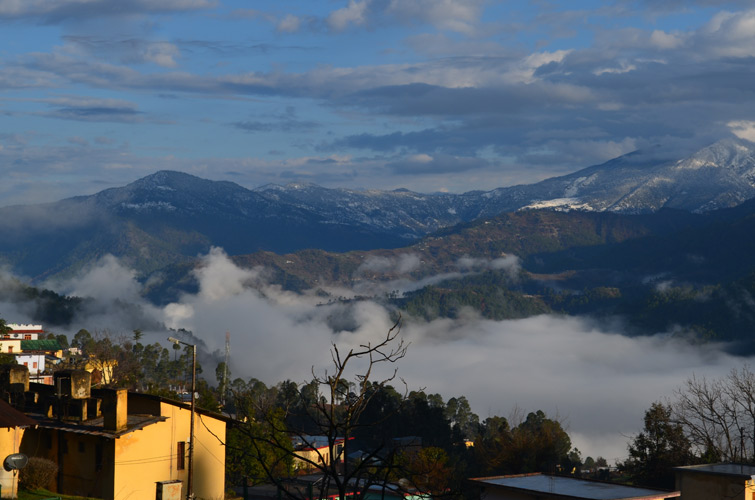
Photo Courtesy: bit.ly/1D8gVqT
Located at a short distance of 6kms from Gwaldam in Uttarakhand, Badharangadi is known for its remnants of a fort, which is supposedly a majestic structure once. Badharangadi is said to be dedicated to Goddess Durga and thus is a spiritual centre in Uttarakhand as well. Hardly anyone knows about this small destination, thus it seems a good idea to explore it and find out for yourself what this mysterious place is all about.
Why you should be here: Offbeat Destination, Historical Ruins, Unspoiled Nature, Tranquility and old world charm.
How to reach: The best way to reach Badharangadi is to take a direct cab. Otherwise, Bageshwar is the nearest town in this area, which is situated at a distance of 45kms from Gwaldam. So, one can first reach Bageshwar by direct bus and then board another for Gwaldam.
Since Uttarakhand is a vast state, we may have missed out on several historical places. We would like to hear from you and we shall anticipate your suggestions. Apart from it, if any of these destinations have appealed you and you would like to pay it a visit, let us know about it. We can help you plan the best tour package at the most reasonable prices. You can contact us at info@tourmyindia.com and call us at +91-9212777224.
Published: 28 Jul, 2015
From the Lake District, Nainital, Nidhi Singh is a travel writer whose love for mountains can be seen in her write ups. Talk about solo travelling, indulging in adventure activities, binging on good food, planning budget trips or the Aurora Borealis and you will get all her attention. It is the wanderlust that keeps her going and if at all she could get one wish granted she would love to live a life less ordinary. Follow her on Twitter, Facebook & Instagram.



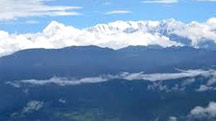 3 Nights / 4 Days
3 Nights / 4 Days  7 Nights / 8 Days
7 Nights / 8 Days 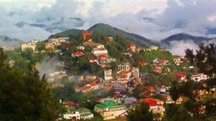 4 Nights / 5 Days
4 Nights / 5 Days 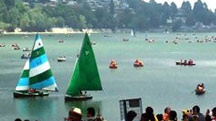 2 Nights / 3 Days
2 Nights / 3 Days 






 5 Nights / 6 Days
5 Nights / 6 Days 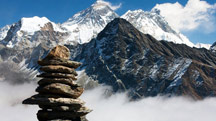 2 Nights / 3 Days
2 Nights / 3 Days 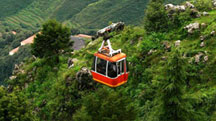 2 Nights / 3 Days
2 Nights / 3 Days 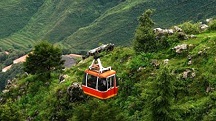 6 Nights / 7 Days
6 Nights / 7 Days 
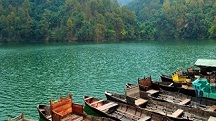 3 Nights / 4 Days
3 Nights / 4 Days  3 Nights / 4 Days
3 Nights / 4 Days 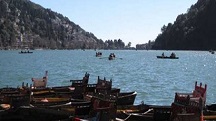 4 Nights / 5 Days
4 Nights / 5 Days  6 Nights / 7 Days
6 Nights / 7 Days 











